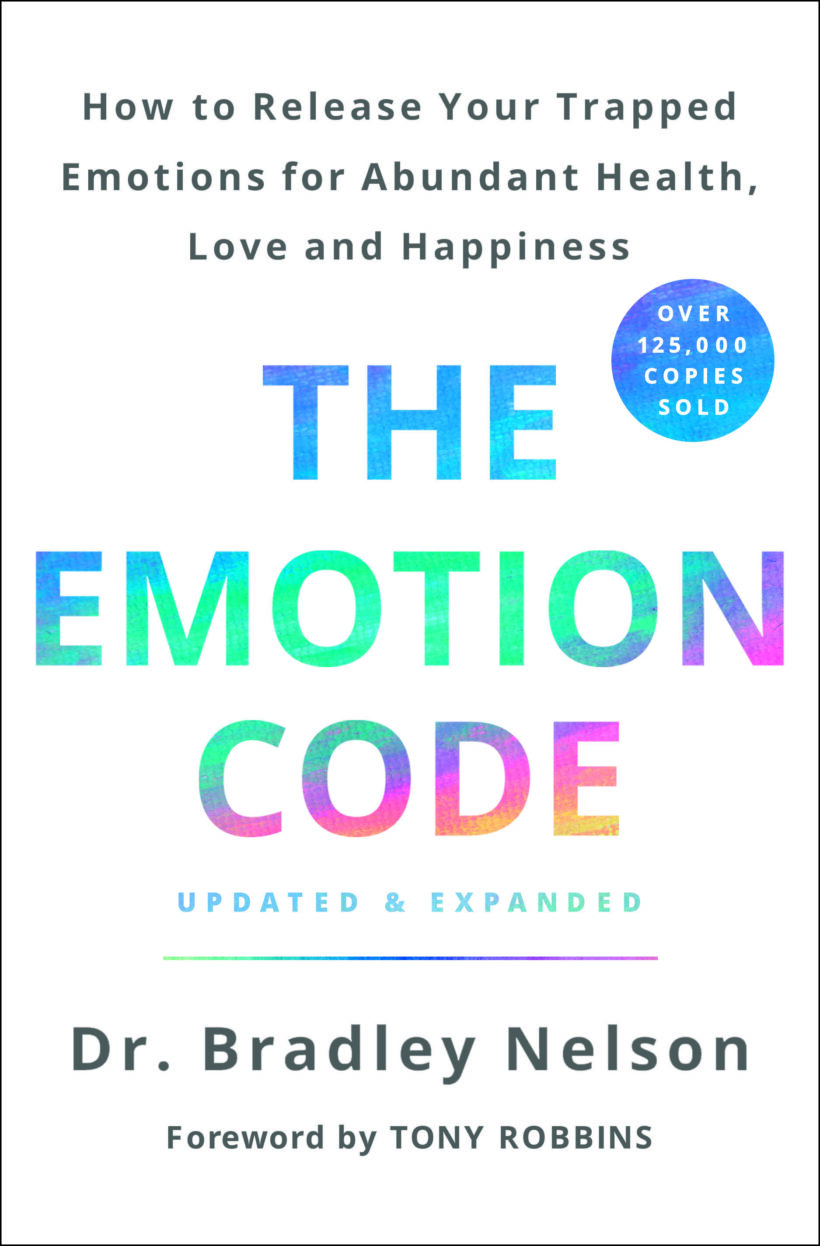How Your Thoughts Affect Others

We had the opportunity to talk to Dr. Bradley Nelson for the podcast months ago, and — I’ll own up to it — I TOTALLY geeked out. (Listen to the episode here.) His work in understanding how trapped emotions can actually be stored in the body and impact your health and happiness blew my mind when I first learned about it. And using his techniques to find them and release them? Well, it definitely changed my life.
Dr. Nelson just released a revised and expanded edition of his bestselling book, The Emotion Code: How to Release Your Trapped Emotions for Abundant Health, Love, and Happiness, and we’ve got an excerpt from it about how your thoughts affect others. It’s super interesting — whether you’re a long-time fan of the Emotion Code or are just learning about it now.
How Your Thoughts Affect Others, Dr. Bradley Nelson
Your thoughts originate from your spirit intelligence and can have a profound effect on those around you. Your thoughts are energy, and are continually radiating from your body, without limits.
The energy of your thoughts and feelings exerts a subtle effect on other people, as well as other forms of life. We are constantly making contact with others whether we realize it or not, since all energy is continuous and connected.
A patient named Linda came to me suffering from Chronic Fatigue Syndrome. She expressed to me that the symptoms of her illness started after she began sharing a cubicle with a very negative woman at her office. This woman was constantly seething about one thing or another. Linda felt that this woman’s negative energy had triggered the downward spiral of her own health.
Ancient healers had a profound understanding of the power of thought. In my seminars I use a simple test to illustrate how thoughts can have a powerful effect on another person’s mind and body, even at a distance.
I have a volunteer stand at the front of the room with her back to the audience. I perform a quick baseline muscle test to make sure she is testable, by having her say “love”, and then pressing down gently but firmly on her outstretched arm. This should give a strong muscle response, and she should be able to resist my downward pressure without any trouble. Then I have her say “hate”, and again I press down on her arm, which now is weakened, making her unable to resist.
I instruct the volunteer to keep her eyes closed and her mind clear. I make sure to keep my mind clear as well, so I won’t interfere with the demonstration. I then instruct the audience that when I give the thumbs-down signal behind the volunteer’s back, they are to silently send negative thoughts to the volunteer, such as “I don’t like you”, or “You are not welcome.” I tell the audience that when I give the thumbs-up signal behind the volunteer’s back, they are to think positive thoughts about the volunteer, such as “I love you”, or “You are wonderful.”
At my thumbs-down signal, the audience begins sending negative thoughts toward the volunteer, and I gently push down on her outstretched arm. I remain silent during the demonstration to illustrate to everyone in the audience that it is their thought energy alone that is creating the effect. Without exception, the volunteer’s arm is always weak.
Then I give the thumbs-up signal and the audience begins sending positive thoughts to the volunteer. I press down on her arm again, but instead of being weak, her arm is invariably strong. Remember that during this process, the volunteer is not consciously aware of what signals I am giving the audience. She not only has her back to the audience, but my communication is non-vocal.
This test has given consistently reliable results during all my years of teaching seminars. It works because we are made of energy, and thoughts are energy, too. When thought energy from others passes through your energetic being, there must always be an effect, either positive or negative. In this case, the audience’s negative thoughts about the volunteer weaken her demonstrably. Their positive thoughts strengthen her. This fascinating, yet simple test has some rather profound implications. –Dr. Bradley Nelson, from The Emotion Code: How to Release Your Trapped Emotions for Abundant Health, Love, and Happiness
How have you experienced other’s thoughts affecting you? Or vice versa? It reminds me of this experiment with plants and negative vs. positive thoughts, too! –Jenn


Comments
Amazing!Every person that “makes us feel” anything, negative or positive, is an opportunity to learn how we feel about ourselves.
So does that mean if i have strong feeling about hate or love towards someone it can affect that person somehow even after i remain silent and not express my self
That is without saying feelings can reach to someone and affect then also??
Comments are closed.